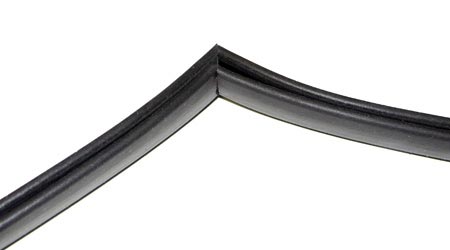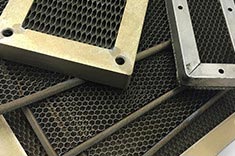EMI Shielding Products
- Custom Gasket Fabrication
- Connector Gaskets
- Bonded O Ring
- Custom Gaskets
- Conduct-O-Knit Knitted Wire Mesh
- Conduct-O-Seal Combo Gasket
- Conduct-O-Elastomer
- Conduct-O-Seal Oriented Wire in Silicone Gasket Material
- Conduct-O-Mesh Tape
- Conduct-O-Foam
- Conduct-O-Bond
- Optical Filters For Electronic Displays
- Shielded Vent Panels
- ESC Board Level Shielding
- 300 Series
Corrosion and EMI Shielding
Electromagnetic gaskets are tools that designers use to prevent electromagnetic radiation from entering and leaving electric devices or enclosures. When using gaskets, they are installed between mating flanges.  An EMI gasket protects devices from electromagnetic radiation, but what about corrosion from the environment? Electronics that are to be used in tempest or humid climates require adequate corrosion protection. Below, we will go over three design tips for stronger corrosion resistance in EMI protection.
An EMI gasket protects devices from electromagnetic radiation, but what about corrosion from the environment? Electronics that are to be used in tempest or humid climates require adequate corrosion protection. Below, we will go over three design tips for stronger corrosion resistance in EMI protection.
- Corrosion will be worse when using materials that have significant differences in their electrochemical potential (relative to structural metal). Choosing the correct EMI gaskets for your application will minimize differences, which will help to slow corrosion (lower galvanic current). For those working with metal contacts, elastomeric EMI gaskets work best.
- Choosing a surface treatment is also very important. Plating or painting metal enclosures heightens protection against corrosion. Additional coatings types can be added to devices that will be used in high humidity or water environments (ocean, pool).
- In some cases, a secondary sealing may benefit corrosion resistance. Using elastomeric gaskets and resistance coatings is better than nothing but adding an extra moisture seal will make your corrosion protection complete.
EMI Shielding

Carefully selecting a mixture of gaskets, coatings, and secondary sealings will help designers to reduce corrosion of parts while also protecting from EMI. It may not be possible to stop corrosion, but it is possible to impede its growth and spread.
For more information on ways to protect from EMI or RFI, give us a call. We can help navigate the confusing world of EMI Shielding.
Related Reading for EMI Shielding
- Understanding Gasket Junction Design
- Effectiveness of EMI Shielding
- Understanding Different EMI Shielding Effectiveness Tests
- Three Methods for Producing EMI Shielding GasketsWe are your one-stop shop for EMI gaskets and EMI shields. Reach out to us today for more information about protecting your election applications.



